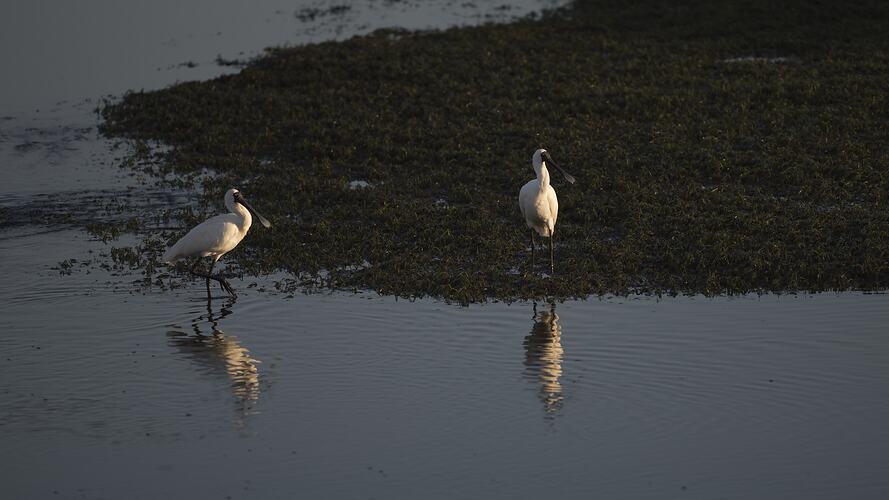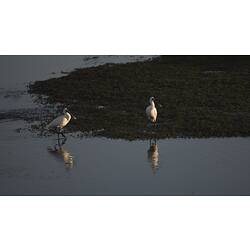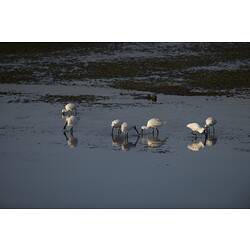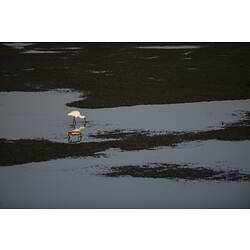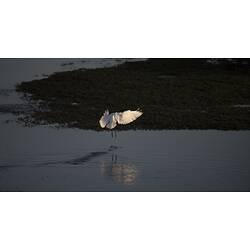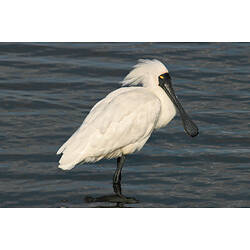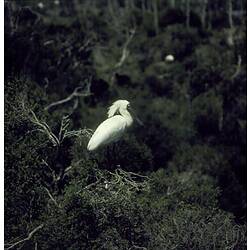General Description
Body white with black legs and facial skin. Bill black and wide with a flat round tip (spoon-shaped). During the breeding season, both sexes have conspicuous white head plumes, a red forehead patch, a yellow patch above the eyes and yellow-buff colouring on the upper breast. Body up to 80 cm long. Flies with the neck, head and legs extended.
Biology
Spoonbills feed by sweeping their bill sideways through shallow water to search for crustaceans, aquatic insects and fish. When prey is caught, they lift their bill up allowing food to slide down their throat. Shells of crustaceans are removed by banging them against a hard object. Spoonbills can feed by night or day and in muddy waters due to sensory structures on the inside of their bill that detect vibrations given off by prey. During the breeding season, they form monogamous pairs and nest in colonies with other waterbirds. Their white head plumes are erected during courtship displays, revealing bright pink skin. Bowl-shaped nests made from sticks are re-used each year, usually built in the top of trees over water or amongst reeds. They are highly sensitive to disturbances while nesting; parents will fluff up their feathers when threatened to appear larger than they are.
Distribution
Indonesia, Papua New Guinea and New Zealand. Mainland Australia except western deserts. Irregular visitor to Tasmania.
Habitat
Wetlands, wet grasslands, tidal mudflats, floodplains, estuaries, saltmarshes and mangroves.
More Information
-
Animal Type
-
Animal SubType
-
Brief Id
A large white waterbird with a black spoon-shaped bill and black legs. Generally seen wading slowly through shallow waters.
-
Colours
White, Black
-
Maximum Size
80 cm
-
Habitats
-
Diet
Carnivore
-
Diet Categories
Crustaceans
-
Endemicity
-
Commercial
No
-
Conservation Statuses
CITES: Not listed, FFG Threatened List: Not listed, EPBC Act 1999: Not listed, IUCN Red List: Least Concern
-
Taxon Name
-
Common Name
Royal Spoonbill
-
Kingdom
-
Phylum
-
Subphylum
-
Class
-
Order
-
Family
-
Genus
-
Species Name
regia
